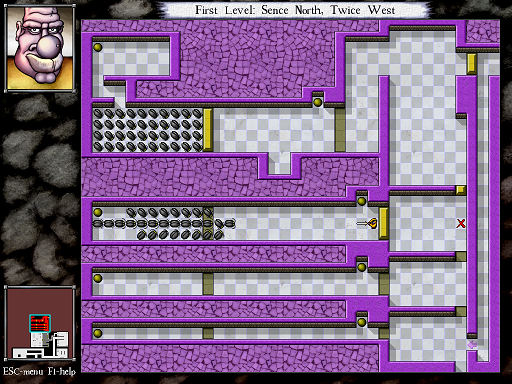The DS Lite
Working at 500% capacity due to ever decreasing size of my team here at the office means that those moments I would choose to update koffdrop.com are becoming more and more scarce. It’s not that I have less to say, far from it, it’s just that I have so much less time to say it in.
My workplace has kindly offered to help out by blocking pretty much every website I normally visit in my working hours and a few more just to be on the safe side. This, the fact that I’m doing the work of at least three people whilst remaining underpaid in the first place and a number of other factors are not helping my mood.
I’ll always make some time to deliver some critique of Nintendo’s latest moves though, of that you can be sure.
Whilst expectations of a redesigned DS were high Nintendo apparently snubbed them with a statement indicating that no information would be forthcoming at this years E3 show, they firmly denied any such redesign would be available. In a move that barely conceals their smugness they announced the DS Lite, due for release on March 2nd in Japan.
Of course, this confirms that there is no need for an unveiling at E3 in May due to the unit having been available for two months by that time. Nintendo, once again, enjoying the delivery of misinformation to their industry and consumers and the bizarre psychology whereby thousands of gamers thank them for such treatment. I remain unimpressed by such behaviour and fully expect some mention of the DS Lite at E3 regardless of Nintendo’s claims.
So, barely a year after it’s initial release, Nintendo have redesigned the unit, moved a few things around and make it look as much as an Apple product as the Revolution appears to be. I guess Apple-chic is probably a little more important if you’re going to be out and about trying to look hip with your iPod and DS at the same time. I suspect it’s only a matter of time before Mr. Jobs and Mr. Iwata get into bed together and spit out some MP3 playing DS compatible gizmo that is the size of your fingernail and comes with the complete works of Pixar pre-loaded and launches with a re-release of Mario 64. God, I bet some of you would love that.
Will the DS Lite follow in the same footsteps as the GBA’s redesign into the SP and mysteriously lose some basic functionality that can only be restored by buying a Nintendo made adaptor? If you’re not sure what I’m going on about, try locating the earphone socket on your GBA SP. I’m all for improved design (although, frankly, I’d rather they got it right the first time rather than staggered out their designs to an easily swayed public) but not at the expense of basic features. It becomes a game of smoke and mirrors:
“Look at our lovely redesigned DS. Don’t you want it? You WANT it! See how sleek it is, how cool it will make you feel. You will say WOW”
“Erm.. ..where do I plug my headphones in, dude?”
“See it sleek and pale design. Just like other top luxury product! You can play GBA games! You can play DS games! You can run Linux!”
“Headphone socket. Where?”
“See how it will compare to Nintendo Revolution in appearance. All this is better! All this is new! This is not as it was before! BUY NOW!”
“Whatever.”
OK, so I’m being overly harsh towards this redesign. Once bitten twice shy, right? I mean, if Nintendo hadn’t already pulled that stunt once then I wouldn’t have reason to question their morals. Oh, and before you feel sorry for Nintendo and claim that they simply didn’t have space in the GBA SP to fit a 3.5mm headphone jack it’s worth bearing in mind that the redesign didn’t happen by accident. It’s not like they said “We must make it this size, not 1mm larger”. The exclusion of the earphone socket and it’s decision to be replaced by an adapter at an additional cost was no accident of design – it was premeditated. Not only that, but in the GBA SP’s current design it would have been possible to fit an earphone socket.
My final concerns on the redesigned DS is it’s name. Nintendo state that the term DS Lite is in reference to the pale complexion and lighter weight of this new machine. In the English language, both those qualities would be described using the word “lighter”. Logically, this would suggest a name of DS Light instead of DS Lite. Whilst “Lite” is a trendier term and, perhaps less easy to confuse with a lamp or torch it is tends to be associated with a product lighter in features or limited in some way when compare to the original. A consumer might read “DS Light” and think “torch” but, crucially, a consumer might read “DS Lite” and think “less”. I recall that press conference with Reggie Fils-Aime lumbering around on stage giving definitions for the term “DS”. Everyone instantly assumed “Dual Screen” but the man from Nintendo tried to convince us it stood for, amongst other things “Developers System”. I don’t think anyone believed him.
For the reason’s stated above, I don’t believe “Lite” stands for lighter weight and lighter appearance. It may be the most poorly chosen of names from a company who have a tendancy to consistently abuse their position as industry icons.
Apart from that, I wish it every success.









